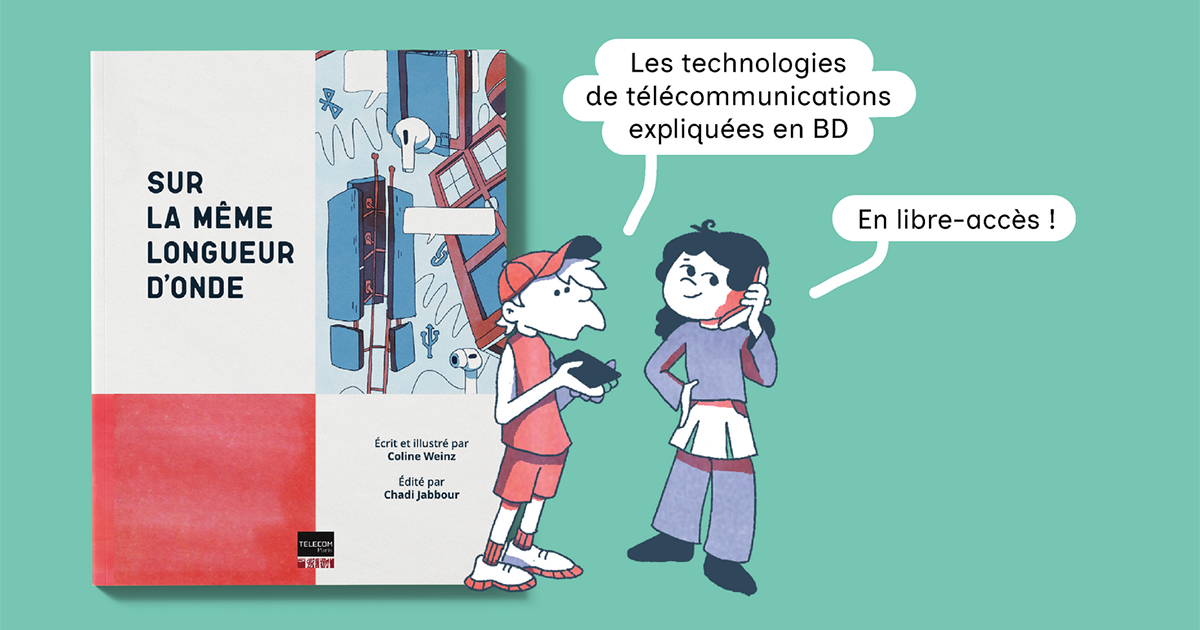A comics about 5G and telecoms!
08 September 2025
It is 2004; Jenny stumbles upon a time machine. Fascinated by dinosaurs, she tries to travel 65 million years back in time but misses her target and lands more modestly… in 2024!
Thanks to a convenient plot twist, she meets Mateo, whose mother is an engineer at the French National Frequency Agency and whose brother is a seasoned environmental activist. These meetings enable Jenny to understand everything about radio waves, mobile phone generations from 1G to 5G and soon 6G, connected cities, data centers and all that these technologies can offer us. But Jenny also discovers the downside, with all the ecological consequences, particularly the problems of energy consumption and mineral extraction. Faced with this dilemma, Jenny is torn and decides to explore new horizons.
This comics was produced as part of the project IMTfor5G+ (Skills and Jobs for the Future), funded by the France 2030 investment plan and the Banque des Territoires. It also received support from the European Shift project.
Chadi Jabbour’s objective is to promote scientific literacy in the field of ICT, particularly wireless communications, through three initiatives:
- Creating this comics;
- Producing a series of educational videos with students of Télécom Paris;
- Visiting French secondary and high schools, around ten per year over the next three years, to raise awareness and educate pupils about the proper use of communication technologies, as well as to attract more young people to these fields, particularly young women, thereby increasing diversity in general in our disciplines and career paths, in engineering training, research, etc.